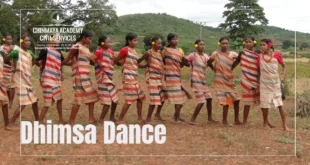The killing of five Bengalis in eastern Assam’s Sadiya on November 1 has led to an uneasy calm in a State divided over language amid a bid by the Central government to pass the Citizenship (Amendment) Bill, 2016. Why the controversy? The Assamese and the Bengali, the two largest linguistic groups in the northeastern region, have had an ambivalent relationship since 1836 when the British made Bengali the official language of Assam. Assamese became the official language 37 years later, but the psychological divide between the communities remained. The situation reached a flashpoint in the 1960s when there was violence against the Bengalis. They seemed to have buried the differences in the decades since the Assam agitation (1979-1985). Where is Sadiya? Sadiya, a police district under Tinsukia, is a metaphor for geographical extremity as well as a cultural paradox. The place bordering Arunachal Pradesh is where the Brahmaputra begins flowing after three rivers — Siang, Dibang and Lohit — meet. Sadiya was the birthplace of Bhupen Hazarika, the balladeer who sang about building bridges between communities. The place was also where Nathan Brown and Oliver Cutter, two American Baptist missionaries, arrived in 1836 from erstwhile Burma with a printing press to eventually give the Assamese language its standard form. Sadiya means ‘land of the rising sun,’ but communication bottlenecks because of a difficult terrain ensured, as conflict management experts say, a fertile ground for the outlawed United Liberation Front of Asom (ULFA), whose revolutionary symbol is the rising sun. Why was a community targeted? The anti-talks faction of the ULFA, headed by Paresh Baruah, denied involvement in the killings but the police have “no doubt” that the outfit, desperate to regroup after setbacks, carried out the attack to cash in on a “conflict situation” triggered by opposing stands on the Citizenship Bill taken by groups adhering to “Assamese nationalism” and “Bengali sub-nationalism.” Allegedly provocative statements by BJP Bengali lawmaker Shiladitya Dev and pro-talks ULFA leaders Mrinal Hazarika and Jiten Duttta added fuel to the emotionally charged atmosphere. The Assamese fear that the Bill, seeking to grant citizenship to non-Muslims from Afghanistan, Bangladesh and Pakistan who came to India as refugees by December 2014, will make Assam a home for “Bangladeshi Hindus.” The BJP insists the Bill is not specific to Hindus and the refugees who fled religious persecution in India’s neighbourhood will be distributed across the country. The police’s Special Branch said it had inputs about possible attacks in Bengali-dominated areas, but nothing was specific. Multi-ethnic Tinsukia is scattered with sizeable pockets of non-indigenous groups such as Bihari, Bengali, Gorkha, and Adivasi with enough voting strength not to elect indigenous candidates in some Assembly seats. The ULFA had in the 1980s set up its first camps in the district. The police say proximity to the jungles of Arunachal Pradesh makes the area ideal for hit-and-run operations. But former Assam police chief G.M. Srivastava said the political situation called for preparedness, and the security agencies failed to analyse the intelligence inputs properly.
Check Also
Urbanisation
Urbanisation refers to shifting of population from rural areas to urban areas. Urbanisation Primarily driven …
 Chinmaya IAS Academy – Current Affairs Chinmaya IAS Academy – Current Affairs
Chinmaya IAS Academy – Current Affairs Chinmaya IAS Academy – Current Affairs



